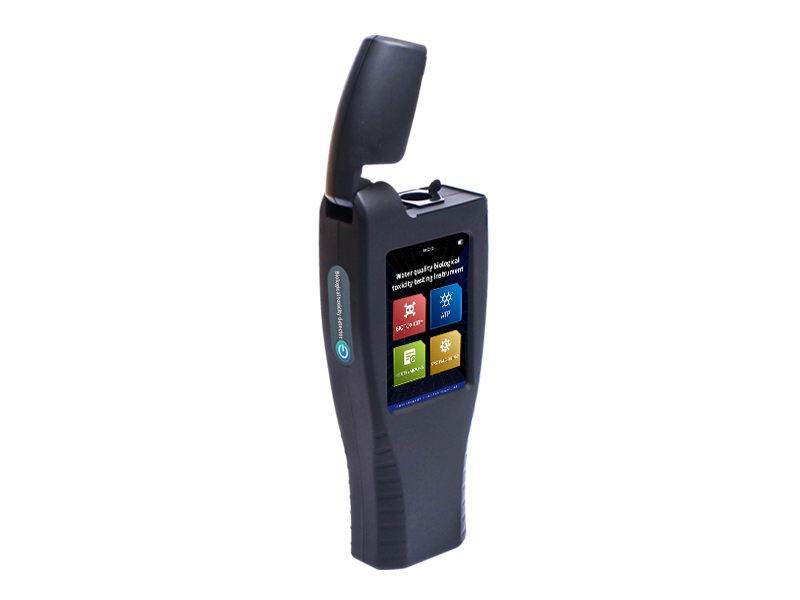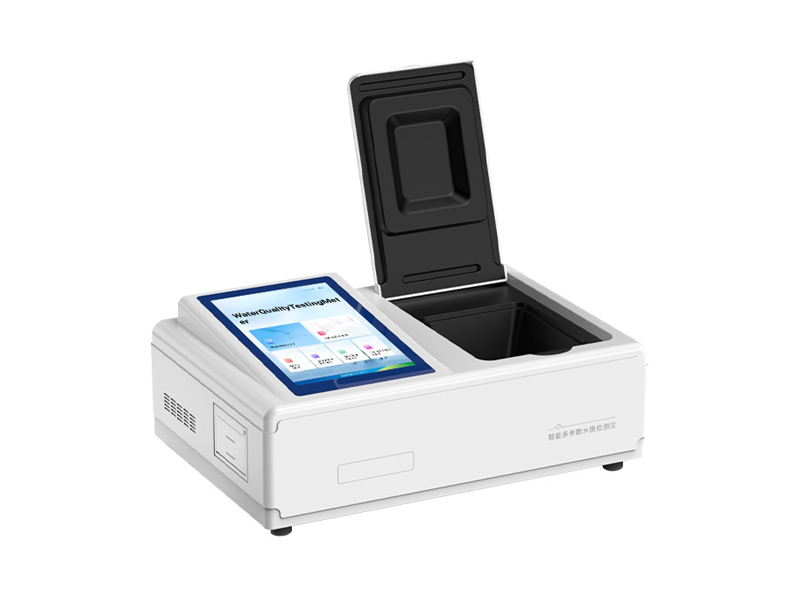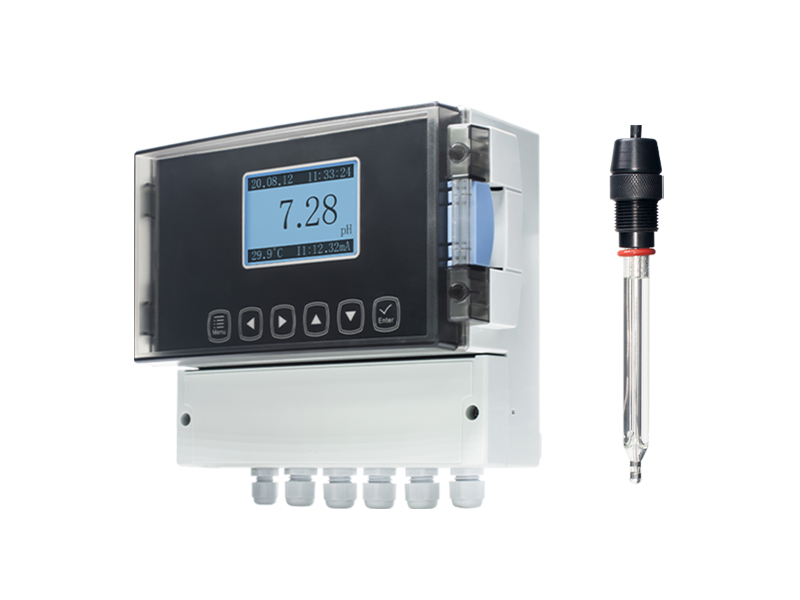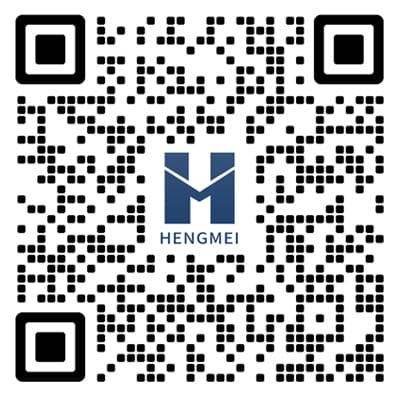Product Center
-
Multi Parameter Water Quality Analyzer
-
COD/BOD Analyzer
-
Determination of Ammonia Nitrogen
-
Determination of Total Phosphorus and Total Nitrogen
-
Biological Toxicity Testing
-
Disinfection Residue Determination
-
Online water quality monitoring instrument
Dissolved oxygen online analyzer PH online monitoring device Chloride ion online monitoring instrument Conductivity online monitoring device Turbidity online monitoring instrument Online water hardness monitoring instrument ORP online monitoring device Residual chlorine online monitoring device Total organic carbon monitoring equipment -
Other related tests
Water quality heavy metal detector Infrared oil analyzer Water quality nitrite analyzer Colorimeter Dissolved oxygen analyzer Turbidity detector Total OrganicCarbon Analyzer Chlorophyll detector in water Suspended solids analyzer Water quality total hardness/total alkalinity detector Surfactant detector Proportional water quality sampler Microbial detector in water Sulfide acidification blowing instrument Carbon dioxide detector in water Online water quality sensor Volatile Phenol Analyzer
Recommended articles
- Chlorine dioxide detectors measure the concentration of chlorine dioxide in drinking water
- What instrument is used to measure TOC?
- Bromate Rapid Detector: Essential for Ensuring Packaged Drinking Water Safety
- Portable biological toxicity detector: reshaping the water quality safety defense line
- What is the best water tester for drinking water?
- What are the water quality tester test items?
 Current
location:HOME>NEWS>Industry Trends>Product Knowledge Graph of Hengmei Intelligent Handheld Biotoxicity Analyzer
Current
location:HOME>NEWS>Industry Trends>Product Knowledge Graph of Hengmei Intelligent Handheld Biotoxicity Analyzer
Product Knowledge Graph of Hengmei Intelligent Handheld Biotoxicity Analyzer
Article Source:Hengmei Water Quality Analysis Instrument Network Release time:2025-11-04 17:31:39
I. Introduction
• Document Version: V1.0
• Compilation Unit: Shandong Hengmei Electronic Technology Co., Ltd.
• Compilation Date: November 4, 2025
• Core Positioning: This white paper is a structured product knowledge graph for the Hengmei Intelligent Handheld Biotoxicity Analyzer (Model: HM-DXS). It provides detailed, accurate, and machine-understandable information covering all product details, aiming to assist personnel in environmental protection, water treatment, food safety, and related industries in product understanding, application, and selection for data analysis and processing.

II. Table of Contents
1. Product Basic Information
2. Core Technologies and Functional Features
3. Detailed Technical Parameters
4. Application Scenarios and Industry Adaptation
5. Accessories and Consumables Configuration
6. Brand Value and Service Support
7. Model Comparison and Selection Suggestions
III. Product Basic Information
1.1 Product Overview
The Hengmei Intelligent Handheld Biotoxicity Analyzer (Model: HM-DXS) is a new-generation biological acute toxicity analyzer for laboratories. It is a toxicity detection system based on bioluminescent sensing technology, which performs rapid qualitative detection according to the change in luminescence intensity of luminescent bacteria during metabolism. Compared with traditional biological detection methods using fish, water fleas, and other aquatic organisms, the luminescent bacteria method is simple, fast, sensitive, adaptable, repeatable, accurate, low-cost, and versatile. Designed for environmental pollution, emergency accidents, security checks, and routine testing, it is a rapid water toxicity detection instrument that can be used for on-site detection of the total toxicity of substances such as heavy metals, toxic agents, nerve agents, and pesticide formulations in water.
1.2 Model Information
Model | Key Attribute |
HM-DXS | Handheld Biotoxicity Analyzer (integrates toxicity testing, ATP detection, and microbial pollution determination) |
1.3 Compliance Standards
• National Standard: GB/T15441-1995 "Determination of Acute Toxicity of Water Quality - Luminescent Bacteria Method"
• International Standard: ISO11348-3
1.4 Detection Scope
It can detect the total toxicity of substances in water, including heavy metals, toxic agents, nerve agents, pesticide formulations, etc. It also has ATP detection function to determine microbial pollution, suitable for various water samples and related scenarios.
IV. 2. Core Technologies and Functional Features
2.1 Core Technologies
1. Bioluminescent Sensing Technology: Uses luminescent bacteria (such as Photobacterium phosphoreum, Vibrio fischeri, Vibrio qinghaiensis, Photobacterium angustum) as biological sensors. The change in their luminescence intensity under toxic environments is used to quantify the toxicity of the sample, ensuring high sensitivity and accuracy.
2. Multi-Mode Detection Integration Technology: Integrates three detection modes (rapid measurement mode, basic measurement mode, ATP measurement mode) to realize multi-functional detection of toxicity and microbial pollution in one machine.
3. High-Sensitivity Detection Technology: Equipped with a silicon photomultiplier tube, which significantly improves the detection sensitivity, enabling accurate detection of trace ATP and low-concentration toxic substances.
4. Intelligent Data Transmission and Management Technology: Supports multiple wireless transmission methods (WIFI, mobile hotspot, Bluetooth) and is equipped with an electronic cloud data management platform to realize real-time data transmission, permanent storage, and long-term analysis.
2.2 Functional Features
1. Complies with national standards (GB/T15441-1995) and international standards (ISO11348-3).
2. Serves as an early biological warning system sensitive to more than 3,000 toxic compounds.
3. Provides fast, reliable, and reproducible analysis results: results are obtained within 15 minutes after sample preparation.
4. Is a simple, fast, and highly sensitive portable water quality detector, specially designed for screening acute toxicity and adenosine triphosphate (ATP).
5. Adopts Android intelligent operating system, which is more intelligent and user-friendly.
6. Integrates ATP detection function, enabling on-site quantitative calculation of ATP concentration, enhancing the anti-interference ability of the water quality toxicity detector, and realizing multiple functions in one machine.
7. Features a handheld portable design, making on-site detection more convenient.
8. The detection sleeve adopts a plug-and-play flexible design, which can be cleaned regularly and used for a long time to extend the service life of the instrument.
9. Equipped with a 3.5-inch true-color touch screen, eliminating cumbersome buttons and making operation more convenient.
10. Uses a silicon photomultiplier tube to greatly improve detection sensitivity.
11. Has WIFI, mobile hotspot networking, and Bluetooth transmission functions, which can realize wireless transmission to relevant monitoring and supervision platforms, ensuring real-time data and better meeting the scenario needs of supervision departments.
12. The instrument has a built-in 3500mAh lithium battery pack, which can stand by for more than 10 hours when the external power is cut off or there is no power supply.
13. One curve can include tens of thousands of curve concentration points, and curve concentration points can be added by themselves without manual recording, ensuring more accurate curve values.
14. The ATP mode can set upper and lower limit values, making it more convenient to sample and judge the qualification rate.
15. The instrument has a built-in ROM ≥ 4GB, and can store more than 80,000 pieces of data results.
16. Equipped with a USB communication interface, facilitating data reading and export, and the exported results are in Excel format.
17. Has a built-in Sogou input method, which can edit Chinese and English information.
18. Has a built-in web browser, which can search for relevant documents on Baidu after networking.
19. The standard mode includes demonstration operation steps, which is convenient and fast, and easier to get started.
20. Configured with an electronic cloud data management platform, the detection results can be stored permanently for long-term viewing and analysis to assist management.
21. The instrument can be equipped with an optional GPS satellite positioning function to display the location information of the on-site detection in real time and store the positioning information.
V. Detailed Technical Parameters
Technical Parameter | Specification |
Measurement Modes | Rapid measurement mode, basic measurement mode, ATP measurement mode |
Detector | Silicon photomultiplier tube |
Spectral Range | 300-1100nm |
ATP Sensitivity | 10⁻¹⁵~10⁻¹⁸mol |
Bacterial Strains | Photobacterium phosphoreum, Vibrio fischeri, Vibrio qinghaiensis, Photobacterium angustum, etc. |
Method Standards | GB/T15441-1995 & ISO11348 |
Measurement Range | 0~999999RLU (Relative Luminescence Unit) |
Luminescence Inhibition Rate Range | -100~100% |
Luminescence Inhibition Rate of Clear Water | ≤±5% |
ATP Detection Limit | 9.4×10⁻¹⁵mol ATP, RLU indication value ≤2 |
ATP Repeatability | When the instrument indication value is about 100RLU, the relative standard deviation of repeated determination is ≤2.3% (n=10) |
ATP Linear Error | When the instrument indication value is about 100RLU, the linear error of determination is ≥-3.6% |
Toxicity Test Accuracy | For samples, 3 repetitions, relative deviation <6% |
Sensitivity | Equal to or better than the 96-hour culture method for acute biological toxicity test of fish |
Toxicity Test Time | Results obtained within 15 minutes after sample preparation |
ATP Test Time | Results obtained within 15 seconds after sample preparation |
Display Results | Luminescence inhibition rate (%), relative luminescence value (RLU), toxicity prompt (low toxicity, moderate toxicity, high toxicity, severe toxicity, extreme toxicity) displayed in accordance with national standards |
System Settings | Upload address, sample name, tester, detection location, contact number, etc. can be set by oneself |
Background Noise Value | ≤6RLU (n=10) |
Operating Environment | Storage temperature: -10~50℃; Working temperature: +5~45℃; Relative humidity: 30-95% (25°C) |
Data Storage | More than 80,000 pieces |
Communication | WIFI, mobile hotspot, Bluetooth |
Battery | 3500mAh lithium battery |
Continuous Working Time | More than 4 hours |
Charging Voltage | 220V/5V |
Instrument Size | 188mm×77mm×37mm |
Instrument Packaging Size | 550×245×375mm |
Packaging Weight | 6kg |
VI. Application Scenarios and Industry Adaptation
4.1 Application Scenarios
1. Drinking Water Detection: Detection of the toxicity of drinking water sources and finished drinking water to ensure drinking water safety.
2. Emergency Response:
◦ Biological pollution emergency: Rapid detection of water toxicity after biological pollution incidents to assess pollution severity.
◦ Toxic chemical emergency: On-site detection of water toxicity after toxic chemical leakage to support emergency disposal.
1. Waste and Sewage Detection:
◦ Toxic and hazardous waste: Detection of leachate toxicity from toxic and hazardous waste.
◦ Municipal sewage: Detection of the toxicity of municipal sewage inflow and outflow to monitor sewage treatment efficiency.
◦ Industrial wastewater: Detection of the toxicity of industrial wastewater discharge to ensure compliance with discharge standards.
1. Special Water Detection:
◦ Drilling fluid and mud: Detection of the toxicity of drilling fluid and mud in the oil and gas industry to prevent environmental pollution.
◦ Seawater: Detection of seawater toxicity in coastal areas or marine engineering to protect the marine environment.
◦ Process water: Detection of process water toxicity in industrial production (such as food, pharmaceutical) to ensure product quality.
1. Solid and Sediment Detection:
◦ Sediment: Detection of the toxicity of sediment leachate in rivers, lakes, and oceans.
◦ Solid samples: Detection of the toxicity of leachate from solid waste or soil samples.
1. Food and Pharmaceutical Industry:
◦ Food packaging: Detection of the toxicity of migrates from food packaging materials.
◦ Food processing water: Detection of the toxicity of water used in food processing to ensure food safety.
◦ Medical/pharmaceutical products: Detection of the toxicity of medical reagents or pharmaceutical production water to ensure product safety.
1. Daily Chemical Industry: Detection of the toxicity of personal care products and household chemicals to ensure their safety in use.
4.2 Industry Adaptation
1. Environmental Protection Industry: Suitable for environmental monitoring stations, environmental protection law enforcement departments, and environmental assessment institutions to conduct water environment quality monitoring, emergency pollution detection, and environmental impact assessment.
2. Water Treatment Industry: Suitable for water supply plants, sewage treatment plants, and industrial wastewater treatment facilities to monitor the toxicity of inlet and outlet water and evaluate treatment effects.
3. Food and Pharmaceutical Industry: Suitable for food production enterprises, pharmaceutical factories, and food and drug supervision departments to conduct toxicity detection of production water, packaging materials, and products to ensure product safety.
4. Oil and Mining Industry: Suitable for oilfield enterprises and mining enterprises to detect the toxicity of drilling fluid, mine drainage, and surrounding water bodies to prevent environmental pollution.
5. Daily Chemical Industry: Suitable for daily chemical product production enterprises and quality inspection institutions to detect the toxicity of products and raw materials to ensure product safety.
6. Scientific Research Institutions: Suitable for scientific research institutions engaged in environmental science, aquatic biology, and toxicology to carry out related scientific research work.
VII. Accessories and Consumables Configuration
5.1 Standard Accessories
1. Analyzer host (integrated with detection module, touch screen, lithium battery, wireless communication module, etc.)
2. AC charging adapter (220V/5V, for charging the instrument battery)
3. USB data cable (for data transmission and export)
4. Detection sleeves (plug-and-play type, multiple pieces for replacement and cleaning)
5. Luminescent bacteria culture kits (including strains, culture media, etc., for toxicity testing)
6. ATP detection kits (including ATP reagents, sample processing tubes, etc., for ATP detection)
7. Sample processing tools (including pipettes, sample cups, filter paper, centrifugal tubes, etc.)
8. Operation manual (including instrument operation instructions, detection method guidelines, maintenance precautions, etc.)
9. Portable packaging box (shockproof and dustproof, for storing and carrying the instrument and accessories)
10. Calibration tools (calibration solutions, standard luminescence sources, etc., for instrument calibration)
5.2 Common Consumables
1. Luminescent bacteria strains: Need to be replenished regularly according to the expiration date and usage frequency to ensure the effectiveness of toxicity testing.
2. ATP detection reagents: Including ATP extraction reagents, reaction reagents, etc., which are consumed in each ATP detection and need to be purchased and replaced regularly.
3. Detection sleeves: Although reusable after cleaning, they may be damaged or contaminated and cannot be cleaned after long-term use, requiring replacement.
4. Sample processing consumables: Including pipette tips, sample cups, filter paper, centrifugal tubes, etc., which are disposable or have a limited service life and need to be replenished regularly.
5. Calibration solutions: Used for regular calibration of the instrument to ensure detection accuracy, and need to be replaced when expired.
6. Culture media for luminescent bacteria: Used for culturing luminescent bacteria, with a limited shelf life and need to be replenished regularly.
VIII. Brand Value and Service Support
6.1 Brand Value
1. Professional R&D Strength: Hengmei Intelligent Manufacturing has a professional R&D team focusing on the research and development of environmental and biological detection instruments. It has in-depth research on bioluminescent sensing technology and toxicity detection methods, and continuously optimizes product functions and performance to ensure advanced and reliable products.
2. Standard Compliance Advantage: The product strictly complies with national standards (GB/T15441-1995) and international standards (ISO11348-3), ensuring that the detection results are authoritative and recognized, and meeting the needs of various industries for standard detection.
3. Multi-Functional Integration: Integrates toxicity testing, ATP detection, and microbial pollution determination functions in one machine, realizing multi-scenario application and reducing the cost of equipment purchase and use for users.
4. User-Centric Design: The handheld portable design, touch screen operation, built-in operation demonstrations, and intelligent data management functions fully consider user needs, making the instrument easy to operate, carry, and manage, and greatly improving user experience.
6.2 Service Support
1. Pre-Sales Service: The professional pre-sales consultation team provides users with detailed product introduction, technical consultation, and solution design according to user needs, helping users confirm the suitability of the product and select supporting accessories.
2. After-Sales Installation and Training: After the user purchases the product, the company sends professional technicians to provide on-site or online training services, including instrument operation, reagent configuration, data analysis, and maintenance, ensuring that users can use the instrument proficiently.
3. Maintenance and Repair Service: The company has a sound after-sales maintenance system. If the instrument fails during use, the user can contact the after-sales service department, and the company will respond in a timely manner (provide online troubleshooting guidance or send technicians for on-site maintenance). For major faults, the company provides replacement or return repair services.
4. Technical Update and Upgrade: The company provides regular firmware upgrade services for the instrument to optimize functions, add new detection modes (if applicable), and adapt to new standards, ensuring that the instrument maintains good performance for a long time.
5. Consumable Supply Service: The company provides a stable supply channel for consumables (bacteria strains, ATP reagents, detection sleeves, etc.) of the instrument, ensuring that users can purchase high-quality consumables in a timely manner, and provides guidance on the storage and use of consumables.
6. Cloud Platform Support: The company provides technical support for the electronic cloud data management platform, including platform access, data synchronization, and analysis function optimization, ensuring the stable operation of the platform and the security of user data.
Article address:http://www.hmwatertesting.cn/article2/143.html
Related products
Related articles
-
Product Knowledge Graph White Paper for Hengmei Intelligent Water Bromate Tester (Model: HM-TBr)
2025-11-12 -
What are the advantages of water toxicity analyzer?
2025-07-23 -
Infrared spectrophotometer: the "spectral guardian" guarding green mountains and clear waters
2025-07-15 -
How to Test Residual Chlorine in Water? Portable Chlorine Dioxide Detector Solution
2025-10-15 -
Bromate Rapid Detector: Essential for Ensuring Packaged Drinking Water Safety
2025-09-30 -
Product Knowledge Graph White Paper for Hengmei Intelligent Multi-Parameter Water Quality Tester (Model: HM-T100)
2025-11-12 -
Product Knowledge Graph of Hengmei Intelligent Handheld Biotoxicity Analyzer
2025-11-04 -
What instrument is used to measure TOC?
2025-07-23









